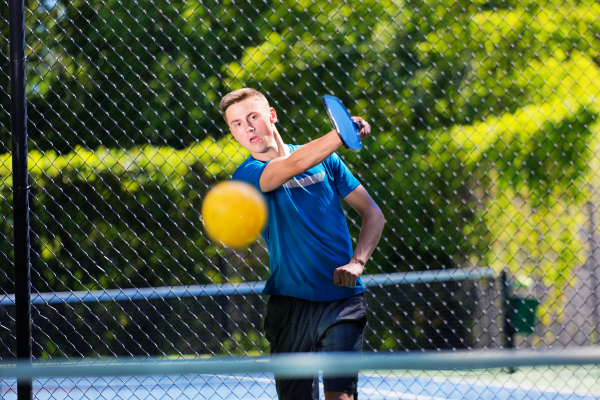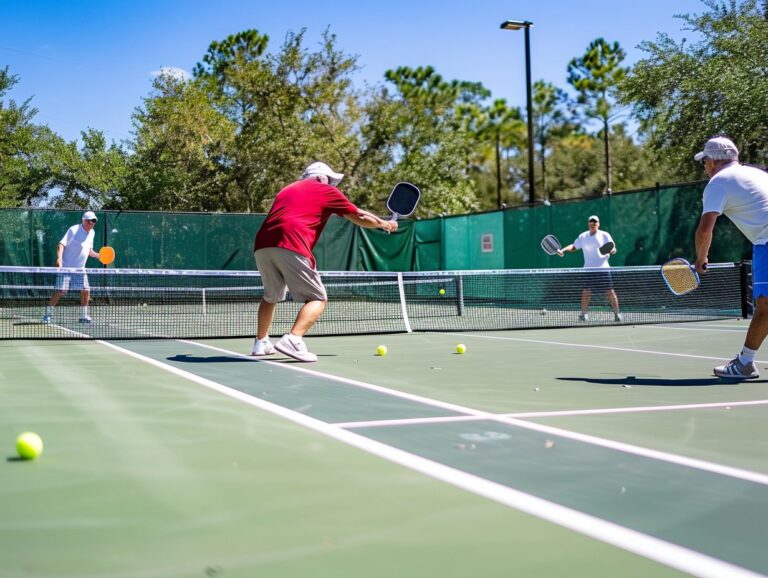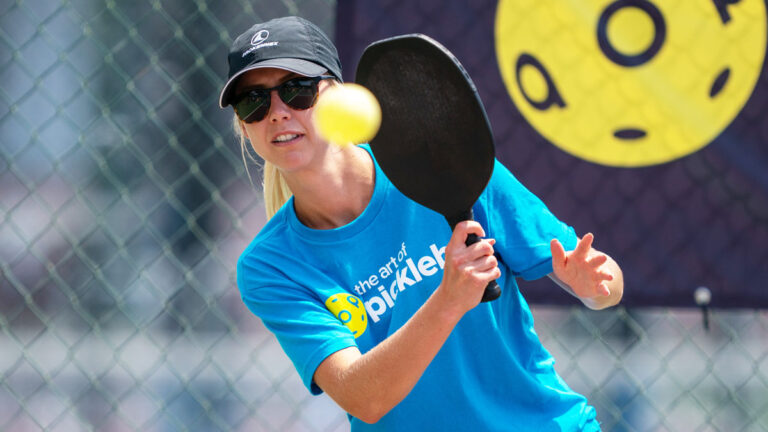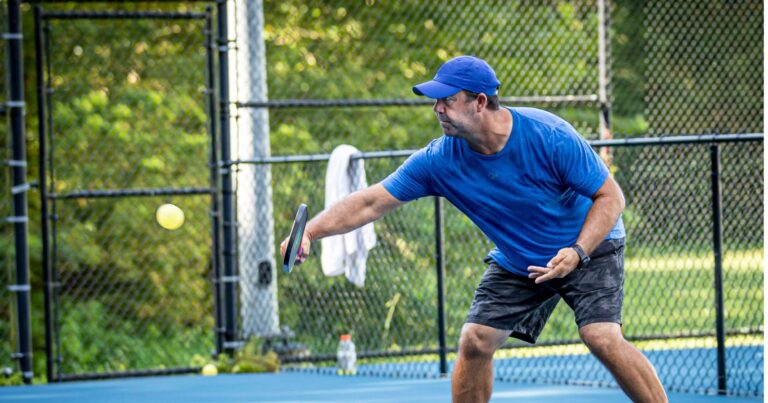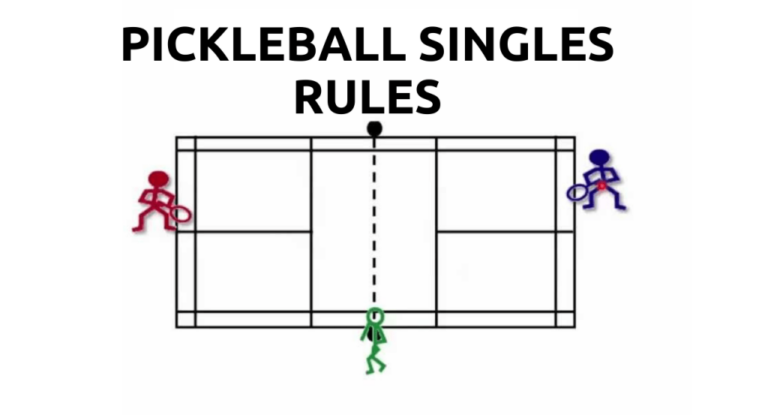How Are Pickleball Players Rated? A Comprehensive Guide
How are pickleball players rated?
Pickleball players are rated based on their skill level, which ranges from 1.0 (beginner) to 5.0+ (professional). The USA Pickleball Association (USAPA) provides guidelines to determine ratings through self-evaluation, evaluation by certified raters, or participation in rating tournaments.
key takeaways
Accurate ratings ensure fair competition and help players find suitable partners. Factors like skills, tournament performance, level of competition, and consistency impact ratings.
• Pickleball has a rating system from 1.0 (beginner) to 5.0+ (professional) outlined by the USAPA
• Ratings can be determined through self-evaluation, certified rater assessment, or rating tournaments
• Accurate ratings ensure fair competition and help find suitable playing partners
• Factors like skills, tournament results, competition level, and consistency impact ratings
• In tournaments, players compete in divisions based on their rating levels
• To maintain/improve rating: participate in rated events, get coaching, develop specific skills, set goals
• Understanding ratings is vital for players to gauge their level and track progress
Introduction
Pickleball, the rapidly growing paddle sport that combines elements of tennis, badminton, and ping-pong, has captured the hearts of millions worldwide. As the game continues to gain traction, understanding the pickleball player rating system has become increasingly important for players, spectators, and tournament organizers alike. Knowing your pickleball rating is crucial for finding suitable partners, ensuring fair competition, and tracking your progress on the court.
In this comprehensive guide, we’ll delve into the world of pickleball player ratings, exploring the various skill levels, self-rating processes, and the significance of accurate ratings in tournament play. So, grab your paddle, and let’s embark on a journey to demystify the art of understanding pickleball ratings.
What Are the Pickleball Skill Levels?
Before we dive into the intricacies of pickleball ratings, it’s essential to understand the different skill levels recognized by the pickleball community. The most common rating system is outlined by the USA Pickleball Association (USAPA), which serves as a guideline for players and tournament organizers.
The USAPA rating system ranges from 1.0 (beginner) to 5.0+ (professional), with intermediate levels designated as 2.0, 2.5, 3.0, 3.5, and 4.0. Let’s take a closer look at each skill level:
2.0 Skill Level
At the 2.0 level, players are just starting their pickleball journey. They can move around the court safely and may occasionally get their serves in, but their overall stroke skills and understanding of the game are still in the early stages.
2.5 Skill Level
Players at the 2.5 level have limited experience but can sustain short rallies with players of equal ability. They have a basic grasp of scoring, the two-bounce rule, and court positioning. However, their dinking and groundstroke form are still works in progress.
3.0 Skill Level
The 3.0 level marks a significant improvement in court awareness and strategy. Players at this level aim to keep their serves and returns deep, move quickly towards the non-volley zone when opportunities arise, and demonstrate a broad understanding of the fundamental rules. They’re also developing their power shots and beginning to experiment with lobs and dinks, although consistency may be lacking.
3.5 Skill Level
At the 3.5 level, players exhibit a broader knowledge of the rules and strategies involved in pickleball. They can consistently deliver deep serves and returns, often targeting their opponents’ weaker sides. Communication with partners and shot placement become more intentional, with a mix of soft and power shots to create advantages. Unforced errors decrease, and players showcase extended periods of multi-dimensional play.
4.0 Skill Level
The 4.0 level represents a significant leap in consistency and offensive mindset. Players at this level anticipate their opponents’ shots, resulting in excellent court positioning and strategic shot selection. They work seamlessly with their partners, easily switching court positions when required, and employing advanced strategies like dinking and third-shot opportunities to gain an edge.
4.5 – 5.0+ Skill Level
At the highest levels of pickleball, players exhibit superior skills, strategy, quickness, and shot placement. Their ability to convert hard shots into soft shots and sustain rallies with patience and consistency is remarkable. Very few unforced errors are made, and their gameplay is characterized by sustained volleying, superior anticipation, and precise put-away shots.
Now that we have a better understanding of the pickleball skill levels, let’s explore how players determine their ratings and the importance of accurate self-assessment.
How to Determine Your Pickleball Rating
Assessing your pickleball rating is a crucial first step in your journey towards improvement and fair competition. There are several ways to determine your rating, including:

Self-Rating
For new players, self-rating is often the starting point. By analyzing your skills, understanding of the game, and performance against players of known ratings, you can make an educated guess about your current level. However, self-rating can be subjective, and it’s essential to be honest with yourself to ensure accurate placement.
Evaluation by Certified Raters or Coaches
If you’re unsure about your self-rating or seeking a more objective assessment, you can have your skills evaluated by certified raters or coaches. These experienced individuals can observe your gameplay, assess your strengths and weaknesses, and provide a more accurate rating recommendation.
Participation in Rating Tournaments or Matches
Another way to determine your pickleball rating is by participating in rating tournaments or matches specifically designed for skill evaluation. These events often involve round-robin play or challenging matches against players of various known ratings, allowing organizers to assess your skills and provide an accurate rating.
Regardless of the method you choose, it’s essential to approach the rating process with honesty and openness to feedback. An accurate rating will not only ensure fair competition but also help you identify areas for improvement and set realistic goals for skill development.
Importance of Pickleball Ratings
Understanding and accurately assessing your pickleball rating is crucial for several reasons:
Finding Suitable Partners and Matches
One of the primary benefits of knowing your rating is the ability to find suitable partners and matches. By playing with individuals of similar skill levels, you can enjoy more competitive and engaging games while avoiding frustration or discouragement from mismatched abilities.
Ensuring Fair Competition
In tournament play, accurate ratings are essential for ensuring fair competition and balanced match-ups. Organizers use player ratings to create appropriate skill brackets or divisions, preventing situations where highly skilled players dominate lower-level competitions or vice versa.
Tracking Progress and Skill Development
Your pickleball rating serves as a benchmark for your current skill level, allowing you to track your progress and celebrate milestones as you improve. By setting goals and striving to advance to higher rating levels, you can stay motivated and focused on developing your game.
Factors Affecting Pickleball Ratings
While the rating system provides a general guideline, it’s important to note that several factors can influence a player’s rating and performance:
Skills and Abilities
Pickleball ratings are primarily determined by a player’s proficiency in various skills and abilities, such as serving, returning, volleying, dinking, court positioning, and strategy. Players who excel in multiple areas tend to have higher ratings, while those with specific weaknesses may struggle to advance.
Match Results and Tournament Performance
Your performance in competitive matches and tournaments can significantly impact your rating. Consistently winning against players of similar or higher ratings can lead to rating increases, while struggling against lower-rated opponents may result in rating decreases.
Level of Competition
The level of competition you face also plays a role in your rating. Competing in local tournaments may yield different results than participating in regional, national, or international events with a higher caliber of players.
Consistency and Longevity
Pickleball ratings are not just about peak performance; they also consider a player’s consistency and longevity. Players who consistently perform well over an extended period are more likely to maintain or improve their ratings compared to those with fluctuating or inconsistent results.
Tournament Play and Ratings
In the competitive world of pickleball tournaments, player ratings take on even greater significance. Here are some key points to consider:
Tournament Divisions and Entry Requirements
Most tournaments organize divisions based on player ratings, ensuring that participants compete against opponents of similar skill levels. Entry requirements often specify minimum or maximum rating thresholds for each division, emphasizing the importance of accurate self-assessment.
Playing Down in Tournaments
While playing at your true skill level is generally encouraged, some tournaments may allow players to “play down” in lower rating divisions under certain conditions, such as beginner events or when paired with a lower-rated partner. However, it’s important to check tournament rules and restrictions, as playing down can sometimes be prohibited or limited.
Rating Adjustments After Tournaments
Tournament results can lead to rating adjustments for participants. Exceptional performances against higher-rated opponents may result in rating increases, while underperforming compared to one’s current rating could lead to decreases. These adjustments help maintain the accuracy and integrity of the rating system.
Maintaining and Improving Your Pickleball Rating
Once you’ve established your pickleball rating, the journey doesn’t end there. Maintaining and improving your rating requires dedication, practice, and a commitment to continuous skill development. Here are some strategies to consider:
Participating in Rated Tournaments and Events
Regularly participating in rated tournaments and events is crucial for maintaining an accurate rating and potentially improving it. These competitive settings provide opportunities to test your skills against players of various ratings and receive feedback on your performance.
Seeking Coaching or Training
Working with experienced coaches or joining training programs can greatly enhance your pickleball skills. Coaches can identify areas for improvement, provide personalized feedback, and develop targeted training plans to help you advance to the next level.
Developing Specific Skills and Strategies
Analyze your gameplay and identify areas where you excel and where you need improvement. Focus on developing specific skills, such as improving your serve consistency, mastering the dink shot, or enhancing your court positioning. Additionally, study advanced strategies employed by higher-rated players and incorporate them into your game.
Setting Achievable Goals
Set realistic and achievable goals for yourself, whether it’s reaching the next rating level, improving your tournament performance, or mastering a particular shot or strategy. Break down these goals into smaller, actionable steps, and celebrate your progress along the way.
Mental Preparation and Mindset
Pickleball is as much a mental game as it is a physical one. Develop a positive mindset, cultivate resilience, and learn to manage stress and emotions during competitive play. Techniques like visualization, self-talk, and breathing exercises can help you maintain focus and perform at your best.
Continuous Learning and Adaptation
The pickleball community is constantly evolving, with new techniques, strategies, and equipment emerging regularly. Embrace a growth mindset by staying up-to-date with the latest developments, attending clinics or workshops, and being open to adapting your game as needed.
Remember, improving your pickleball rating is a journey, not a destination. Celebrate your successes, learn from your setbacks, and enjoy the process of becoming a better player.
Conclusion
Understanding how pickleball players are rated is essential for navigating the competitive landscape of this exciting sport. By familiarizing yourself with the various skill levels, self-rating processes, and the significance of accurate ratings, you can ensure fair competition, find suitable partners, and track your progress on the pickleball court.
Embrace the rating system as a tool for personal growth and skill development, and remember that every player, regardless of their current rating, has room for improvement. Surround yourself with a supportive pickleball community, seek guidance from experienced players and coaches, and never stop learning and refining your game.
As the popularity of pickleball continues to soar, the importance of a well-structured rating system becomes even more apparent. By respecting the guidelines and striving for accurate self-assessment, we can contribute to the growth and integrity of this beloved sport.
So, grab your paddle, step onto the court, and let your pickleball journey begin (or continue) with a newfound appreciation for the art of understanding pickleball ratings.

